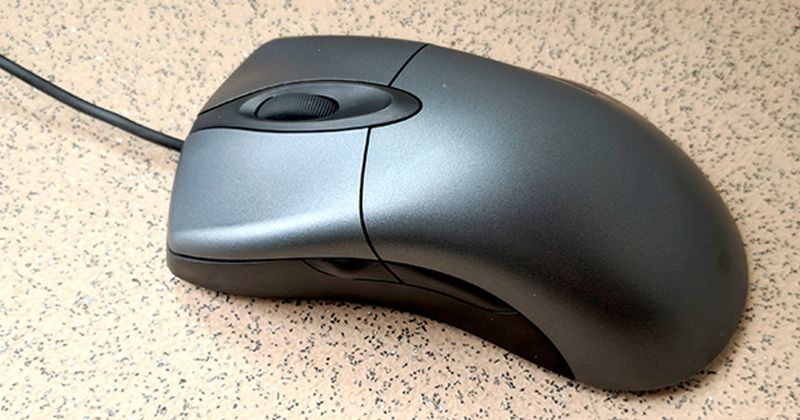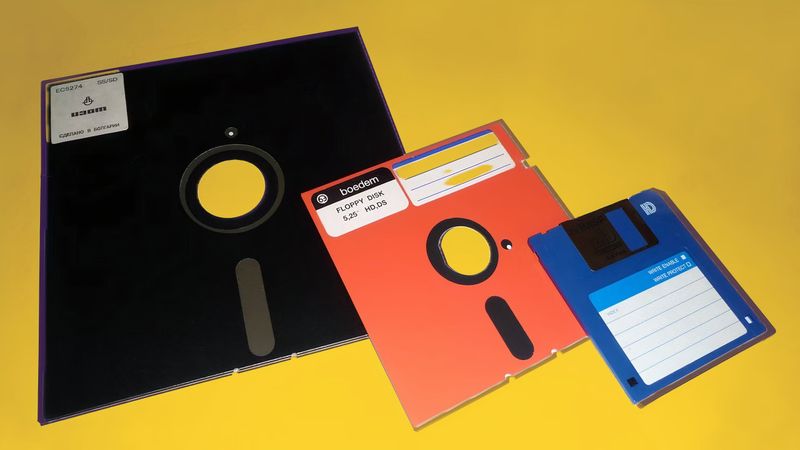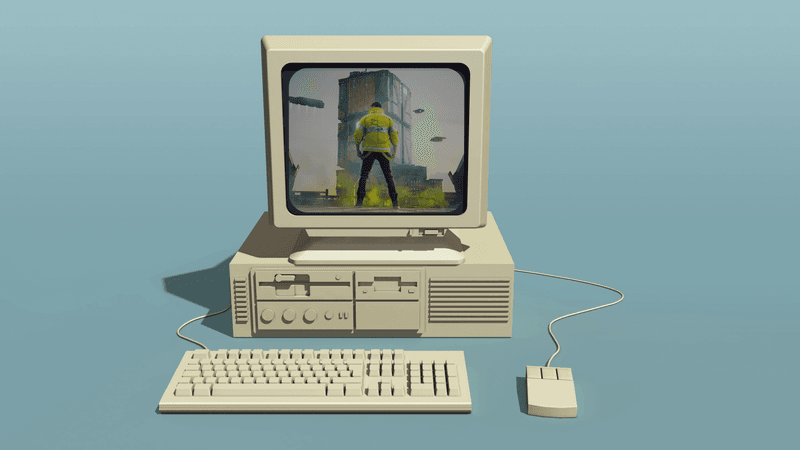15 Hilarious Misunderstandings Boomers Had About Computers Back In The ’90s

The 1990s were a turning point—a decade when computers began their steady march into our homes, whether we were ready or not.
For many, especially Boomers, this technological leap came with a learning curve steep enough to cause more than a few memorable blunders. It was a time of dial-up tones, floppy disks, and family arguments over who got to use the single household computer.
And amid all that, there were some truly hilarious misunderstandings. Some thought the computer mouse was an actual rodent, while others assumed email was just another kind of postal service—or worse, a gender designation! These innocent missteps, though funny, were also heartwarming reminders of a generation adapting to a fast-changing world.
Join me for a lighthearted journey through 15 laugh-out-loud moments that perfectly capture the confusion, charm, and chaos of the early digital days. Trust me, you’ll be grinning—and maybe even reminiscing—by the end.
1. The Mouse Dilemma

Who knew a small rodent could cause such confusion? Back in the ’90s, when my parents first encountered a computer mouse, they thought it was a literal mouse. My dad even asked if it needed cheese! These kinds of misunderstandings were common, as many Boomers weren’t familiar with computer terminology. The idea of moving a cursor with a ‘mouse’ seemed absurd to them.
Their bewilderment was both amusing and endearing, as they tried to connect the dots between the familiar and the technological. Eventually, my dad joked about having a ‘pet mouse’ on his desk, embracing the humor in the situation.
Did you know? The computer mouse was invented by Douglas Engelbart in 1964, but it didn’t become mainstream until the ’90s.
2. The Email Enigma

Emails were a new frontier in communication, but Boomers often interpreted them quite literally. One day, my aunt triumphantly announced she had received her first ’email,’ holding a physical letter with an ‘@’ symbol on it. It was a moment to remember! Her excitement was contagious, but it highlighted the gap in understanding digital communication.
In those days, the concept of sending messages electronically was like something out of a sci-fi movie. It was both exciting and baffling, leading to some hilarious exchanges. Eventually, she got the hang of it, but not before providing us with some comic relief.
Fun fact: The ‘@’ symbol became a standard in email addresses thanks to Ray Tomlinson, who sent the first network email in 1971.
3. The Internet Is a Fad

Remember when the internet was considered just a passing phase? My uncle was convinced it wouldn’t last. He’d scoff and say, ‘It’s just a fad, like bell-bottoms!’ Little did he know how transformative it would become.
Despite his skepticism, the rest of the family embraced the digital age, while Uncle Mike held on to his rotary phone and typewriter. His disbelief was both amusing and a reminder of how quickly technology can shift paradigms.
Eventually, even he had to admit defeat, buying his first smartphone and joining the online world. Did you know? The World Wide Web, invented by Tim Berners-Lee, became publicly available in 1991, changing the way we communicate forever.
4. Password Paranoia

Passwords were a new concept, and Boomers were understandably cautious. My friend’s parents went to great lengths to protect their digital accounts, writing passwords on sticky notes and plastering them all over the computer screen. Talk about security!
Their paranoia was both amusing and an insight into their struggles with new technology. The idea of remembering complex codes seemed daunting, leading to creative yet flawed security measures.
Over time, they learned about password managers and encryption, but those early days were a lesson in trial and error. Fun fact: The first computer password was introduced by Fernando Corbató in the 1960s, but it wasn’t until the ’90s that they became a household necessity.
5. The Virus Angst

In the ’90s, computer viruses were the digital equivalent of a plague, and Boomers were terrified. My neighbor once unplugged his entire system, fearing it would ‘catch a cold’ from a virus warning. His panic was both humorous and telling of the times.
The fear of viruses reflected the uncertainty surrounding digital security. With names like “Melissa” and “ILOVEYOU,” these viruses seemed almost personal.
Eventually, antivirus software became more sophisticated, but those early days were filled with anxiety and laughter. Did you know? The first computer virus for MS-DOS, known as the “Brain” virus, was created in 1986, but it wasn’t until the ’90s that viruses became a widespread concern.
6. The Floppy Fiasco

Floppy disks were the USB drives of the ’90s, but not everyone got the hang of them. I remember my dad trying to insert a floppy disk into the CD-ROM drive, convinced it would fit. The ensuing frustration was both comical and relatable.
Floppy disks were a staple of the era, yet they required a certain finesse to use correctly. Their limited storage and delicate nature added to the challenge.
Eventually, USB drives replaced them, but not before providing a decade of both utility and comedy. Fun fact: The 3.5-inch floppy disk could hold 1.44 MB of data, a far cry from today’s storage solutions. They were essential for software installation and file transfer.
7. The Print Button Panic

Printers were a source of endless frustration, especially for Boomers. I remember my mother furiously pressing the print button, convinced her document would eventually emerge from the noisy dot matrix printer. Her persistence was admirable!
The print button panic was a rite of passage for many, as printers often jammed or produced garbled text. The technology was still evolving, leading to frequent headaches.
Over time, printers became more reliable, but those early experiences were a mix of humor and exasperation. Did you know? The first dot matrix printer was introduced by Centronics in 1970, and these devices remained popular through the ’90s before more advanced models took over.
8. The Desktop Disaster

Organizing a computer desktop was an art form, and not everyone was an artist. My cousin’s desktop looked like a digital battlefield, with icons scattered everywhere. He’d lose files amidst the chaos, leading to hilarious ‘file hunting’ sessions.
The desktop disaster was a common sight, as Boomers grappled with file management in the digital age. The lack of organization was both frustrating and funny, as they navigated through the clutter.
Eventually, he learned the joys of folders, but those early days were a lesson in digital decluttering.
Fun fact: The desktop metaphor was introduced by Xerox PARC in the 1970s, but it wasn’t until the ’90s that it became a standard user interface.
9. The Download Dilemma

Downloading files was a mysterious process, filled with uncertainty. My uncle once called me, baffled by a download progress bar that seemed to take forever. ‘Is it broken, or just thinking?’ he’d ask, bewildered by the wait.
The download dilemma was a shared experience, as internet speeds were sluggish and patience was tested. Watching those bars creep along was both frustrating and comical.
Eventually, faster connections made downloads less of a headache, but those early days were anything but swift. Did you know? The first practical internet download system, FTP, was developed in the 1970s, but home internet speeds in the ’90s often made downloading a test of endurance.
10. The Browser Blunder

Web browsers were gateways to the internet, but not all Boomers found them intuitive. My aunt would open endless windows, thinking she was visiting multiple sites simultaneously. Her bewilderment was both charming and a testament to the era.
The browser blunder was a rite of passage for many, as they learned to navigate the web. The thrill of exploration was often hampered by confusion and chaos.
Over time, she mastered browsing, but those early days were filled with humorous mishaps.
Fun fact: The first graphical web browser, Mosaic, was released in 1993, paving the way for modern browsing experiences.
11. The Spreadsheet Saga

Spreadsheets were a puzzle for many Boomers, including my dad, who once declared, ‘These cells are more confusing than biology class!’ His struggle with formulas and functions was both entertaining and enlightening.
The spreadsheet saga was part of the learning curve, as they navigated through rows, columns, and calculations. The complexity was daunting, but perseverance prevailed.
Eventually, he mastered spreadsheets, using them to organize everything from finances to family recipes. Did you know? The first spreadsheet program, VisiCalc, was developed in 1979, but it wasn’t until the ’90s that programs like Excel became popular, revolutionizing data management.
12. The Chatroom Catastrophe

Chatrooms were the social media of the ’90s, but the pace was overwhelming for some. My parents entered a chatroom, only to be bombarded with messages. ‘It’s like trying to talk at a rock concert!’ my mom exclaimed, wide-eyed.
The chatroom catastrophe was a learning experience, as they adjusted to real-time conversations. The excitement was palpable, even if it meant missing half the messages.
Eventually, they found their rhythm, joining online communities and making new friends. Fun fact: The first public online chat service, CompuServe’s CB Simulator, went live in 1980, but chatrooms gained mainstream popularity in the ’90s as internet access expanded.
13. The Multimedia Misjudgment

Multimedia was the buzzword of the ’90s, but understanding it was another matter. My aunt tried playing a music CD on her computer, expecting it to play automatically. ‘Is it broken, or am I?’ she quipped, perplexed by the silence.
The multimedia misjudgment was a common occurrence, as Boomers explored the capabilities of their tech. The learning curve was steep, but the potential was exciting.
Eventually, she figured it out, enjoying music and videos on her computer, but not without some trial and error. Did you know? The CD-ROM format was introduced in 1985, but it wasn’t until the ’90s that multimedia PCs became widely available, changing how we consumed media.
14. The Operating System Ordeal

Operating systems were as perplexing as they were powerful. My neighbor once called me over, panicking over error messages on his screen. ‘Is my computer speaking Klingon?’ he wondered aloud, bewildered by the jargon.
The operating system ordeal was a rite of passage, as Boomers learned to navigate these complex systems. The language often seemed alien, leading to both frustration and amusement.
Over time, they became more user-friendly, but those early experiences were a mix of mystery and mayhem. Did you know? Windows 95, released in 1995, was a game-changer in the OS world, introducing features like the Start menu and taskbar that remain staples today.
15. The Tech Support Tangle

Tech support was a lifeline for many Boomers, but calls often ended in exasperation. My uncle once spent hours on hold, only to be told to ‘turn it off and on again.’ His frustration was both hilarious and a sign of the times.
The tech support tangle was part of the tech journey, as they sought help navigating the digital landscape. The wait times and cryptic advice were challenges to overcome.
Eventually, they learned to troubleshoot on their own, but those early calls were an exercise in patience. Fun fact: The phrase ‘turn it off and on again’ became a tech cliché, as it often solved simple issues, sparking both relief and amusement.
